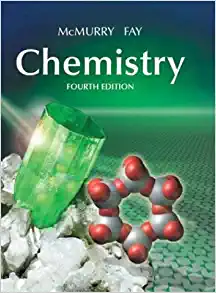Question
PHYSICAL AND CHEMICAL PROPERTIES AND CHANGES Introduction Chemists use many terms to describe matter and its composition. A sample of matter that has fixed chemical
PHYSICAL AND CHEMICAL PROPERTIES AND CHANGES Introduction Chemists use many terms to describe matter and its composition. A sample of matter that has fixed chemical composition and characteristic properties is called a substance. Oxygen, for example, is a substance that is a colorless, odorless gas at 25 C. Sodium chloride and glucose are also substances. By definition, a substance is pure only if it contains only one type of formula unit. For example, pure gold contains only gold atoms and pure water contains only water molecules. A sample of air, however, is not a pure substance. Air contains a mixture of gases such as nitrogen, oxygen, argon, carbon dioxide, and several others. Any sample of matter that contains two or more substances is called a mixture. Individual substances within a mixture retain their properties and the substances can be present in variable proportions. A mixture can further be described as homogeneous when all components are in the same physical state, or phase, and have no visible boundaries. A sample of air contains many different gases, but its components cannot be visualized separately, so it is a homogenous mixture. Another example of a homogenous mixture is table salt dissolved in water. If no solid salt particles are visible, the mixture looks uniform throughout. Homogeneous mixtures such as air and salt water are also referred to as solutions. Note that solutions do not have to be liquid. For example, solder is a solid solution made from lead and tin. Mixtures that are not completely uniform are termed heterogeneous. Mixtures such as ramen or soda appear heterogeneous to the eye. Both ramen and soda are mixtures because they contain different phases of matter. Some mixtures must be examined under a microscope to determine whether they are homogeneous or heterogeneous. Milk, for example, appears homogeneous at first glance, but under a microscope, tiny globules of fat and protein are visible. Because there are definite boundaries for the particles, milk is a heterogeneous mixture. Matter can also be described and classified by referring to its properties. A physical property is a characteristic of matter that is not associated with a change in its chemical composition. Familiar examples of physical properties include density, color, hardness, solubility, melting and boiling points, and electrical conductivity. Some physical properties, such as density and color, can be observed without changing the physical state of the matter being examined. Other physical properties, such as the melting temperature of iron or the freezing temperature of water, can only be observed as matter undergoes a physical change. A physical change involves a single substance and is a change in the state, form, or properties of matter without any accompanying changes in the chemical composition of the substances contained in the matter. A physical change occurs when ice melts, when a glass breaks, and when dry ice sublimates into carbon dioxide gas. The ability to change from one type of substance into another is a chemical property. Examples of chemical properties include flammability, digestibility, acidity, and reactivity. Iron, for example, combines with oxygen in the presence of water to form rust, but chromium does not react with oxygen readily. Nitroglycerin is very dangerous because it explodes easily, but neon is an unreactive gas. A chemical change always results in one or more substances that have different identities from the original sample. The process that takes place during a chemical change involves the making or breaking of chemical bonds within a substance. The formation of rust is a chemical change because rust is a different kind of matter than the iron, oxygen, and water present before the rust formed. The combustion of sugar is a chemical change because it produces carbon dioxide and water. Chemical changes are often, but not always, accompanied by an emission or absorption of light or heat, a change in color, and/or the formation of bubbles (indicating a gas) or a solid (precipitate). Procedure In todays lab activity, you will use a technique practiced by scientists of all levels of ability through centuries: observing the world around you and recording your observations. Spend some time walking through your household, your neighborhood, your workplace, or anywhere you like. Chemistry is occurring all around you regardless of your setting. As you move through the space, try to classify what you see. What do you see that is a pure substance? What solutions do you observe? What mixtures can you see, and are they homogeneous or heterogeneous? Concentrate also on the properties and changes you notice: make note of physical properties, chemical properties, physical changes, and chemical changes. Fill out the worksheet with your observations.
Worksheet
List four pure substances that you observed:
1.
2.
3.
4.
List four homogeneous mixtures that you observed:
1.
2.
3.
4.
List four heterogeneous mixtures that you observed:
1.
2.
3.
4.
List four physical changes that you observed. For each, indicate what physical property was changed.
1.
2.
3.
4.
List four chemical changes that you observed. For each, indicate how you know it is a chemical change.
1.
2.
3.
4.
Step by Step Solution
There are 3 Steps involved in it
Step: 1

Get Instant Access to Expert-Tailored Solutions
See step-by-step solutions with expert insights and AI powered tools for academic success
Step: 2

Step: 3

Ace Your Homework with AI
Get the answers you need in no time with our AI-driven, step-by-step assistance
Get Started


